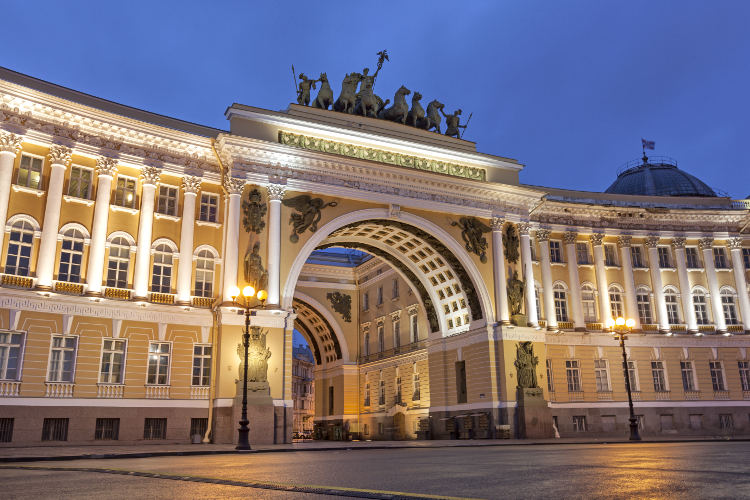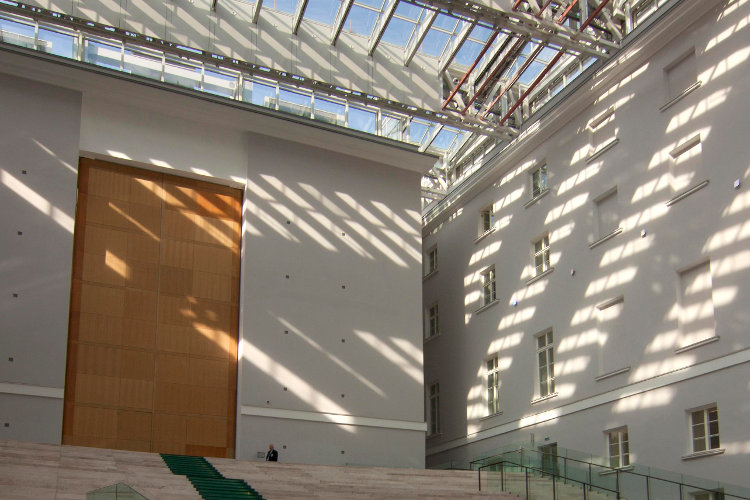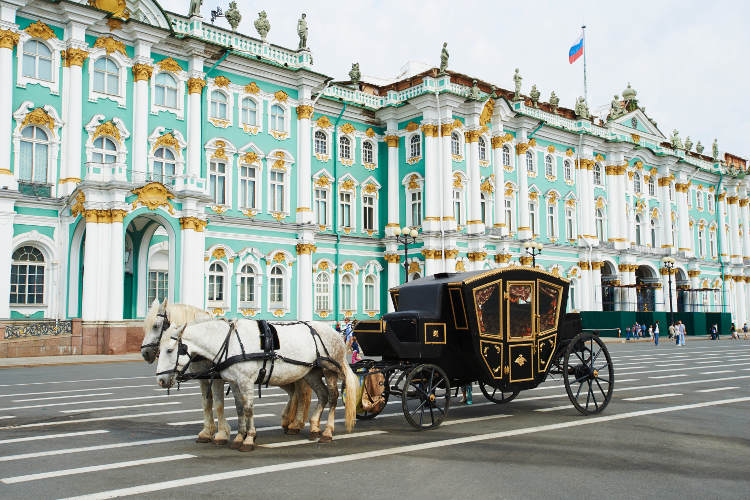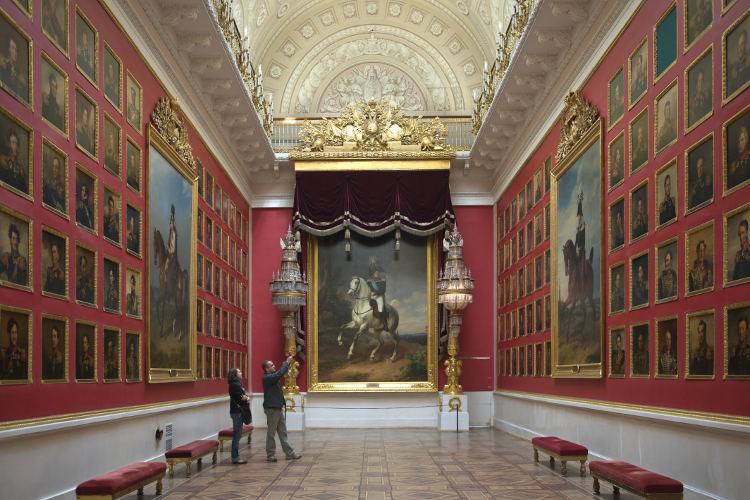
The State Hermitage Museum is finally dragging itself into the modern age. The museum – which began life in the 18th century as the private art collection of the Romanovs and morphed spectacularly through Catherine the Great’s art grabs in the auction houses of Western Europe to become quite possibly the greatest collection of European art in history – has been in need of modern hanging space for some time. That this has taken a while is hardly surprising, given that the main museum buildings are historically significant palaces which cannot be altered easily and were not built to be public galleries in the first place.

To mark the museum’s 250th anniversary, the Hermitage has reopened Carlo Rossi’s staggering early-19th-century General Staff Building, having totally refitted its interior. This is now a startling combination of sky-lit atriums, brushed concrete walls and spaces that could well have been newly built for the optimal display of modernist friezes and landscapes. The redeployment of the 19th- and 20th-century collections (formerly on display in the state rooms of the Winter Palace across the square) is now complete – the extra space means that in many cases new paintings, which had been hidden away in storage or in other buildings of the museum, have finally made it into the display.
And this is no ordinary collection, but a roll call of the greats in modern European art. Many of the paintings here were culled by the Bolsheviks from the private collections of Russian businessmen Sergei Shchukin and the Morozov brothers, and even from that of German industrialist Otto Krebs, whose collection of Impressionist and post-Impressionist paintings was removed by the Red Army from the ruins of Nazi Germany in 1945. The paintings here include key works of Monet, Cézanne, Renoir, Degas, Gauguin, Seurat, Pissarro, Van Gogh, Matisse and Picasso, to name but a few.

Elsewhere in the enormous General Staff Building there’s also new space given over to temporary exhibits, a display of art nouveau creations, a dazzling collection of gifts sent to successive tsars from all over the world, and a huge exhibition of 19th-century landscape painting. The entire project is an enormous success and makes now a very exciting time to visit the museum.
Of course, a shortage of display space is no new problem for the museum. With more than three million items in its collection, the venerable institution has been bursting at the seams for decades. One partial solution was the construction of the Hermitage Storage Facility in the north of St Petersburg. Now a decade old, and still growing (its second state-of-the-art wing was completed in 2012), it houses a collection which would be a major sight in itself anywhere else in the world. Dwarfed by the masterpieces in the Winter Palace it may be, but the Storage Facility (which can be visited only by guided tour) offers a fascinating behind-the-scenes look at how the museum is curated, its cast-offs in some senses as fascinating as its highlights.

The Hermitage also includes St Petersburg’s first real palace, that of Prince Menshikov on Vasilyevsky Island. It contains little notable in the way of art but is full of furniture and period objects. A visit here is a fascinating way to see how aristocrats lived in the early 18th century as St Petersburg was slowly coming to life, having been ordered into existence by Peter the Great as a ‘window on Europe’ for his colossal and backward empire.
The Museum of the Imperial Porcelain Factory, located a fair way from the city centre in the south of St Petersburg, is the place to go for anyone interested in the art of porcelain. While it’s not possible to see the actual factory floor, the entrance ticket to the Hermitage includes a visit to the fascinating museum here. It documents the evolution of Imperial Porcelain Factory from its creation in 1744, when its remit was purely to produce porcelain for the imperial family and court, to the present day, when its products are sold around the world. Most fascinating are the designs undertaken by the factory during the 20th century, which see experimentations in art deco and art nouveau morph into constructivism and then agitprop pieces of socialist realism as the century wears on.

If you have only one day to enjoy this outstanding museum, concentrate on the buildings on Palace Square – there’s a reason that the biggest and most impressive palaces in the city were used to display its treasures. Da Vinci, Botticelli, Caravaggio, Rembrandt and Titian jostle for your attention, while the sarcophagi of the pharaohs, Greek and Roman sculpture, and the sumptuous state rooms of the Romanovs all demand a visit before anything else. You can also – at a push – see the General Staff Building in the same day as the main Hermitage if time is very tight, though a separate half-day is a far better way to take in this stellar addition to Europe’s most extraordinary art collection.
While you can buy tickets online (US$18/23 for a one/two-day ticket), this is not currently a great deal due to the low value of the rouble. While the online ticket will allow you to skip the line, buying a day ticket at the ticket office for all the Hermitage museums currently costs US$11, while entry to the General Staff Building alone costs just US$6. There are often long queues for tickets at the Winter Palace – to avoid them try buying yours at the General Staff Building on the other side of Palace Square, or at any of the other Hermitage museums. The Hermitage is closed on Monday, and free to all on the first Thursday of the month (when it’s also extremely busy). It is always free for children and students with identification.